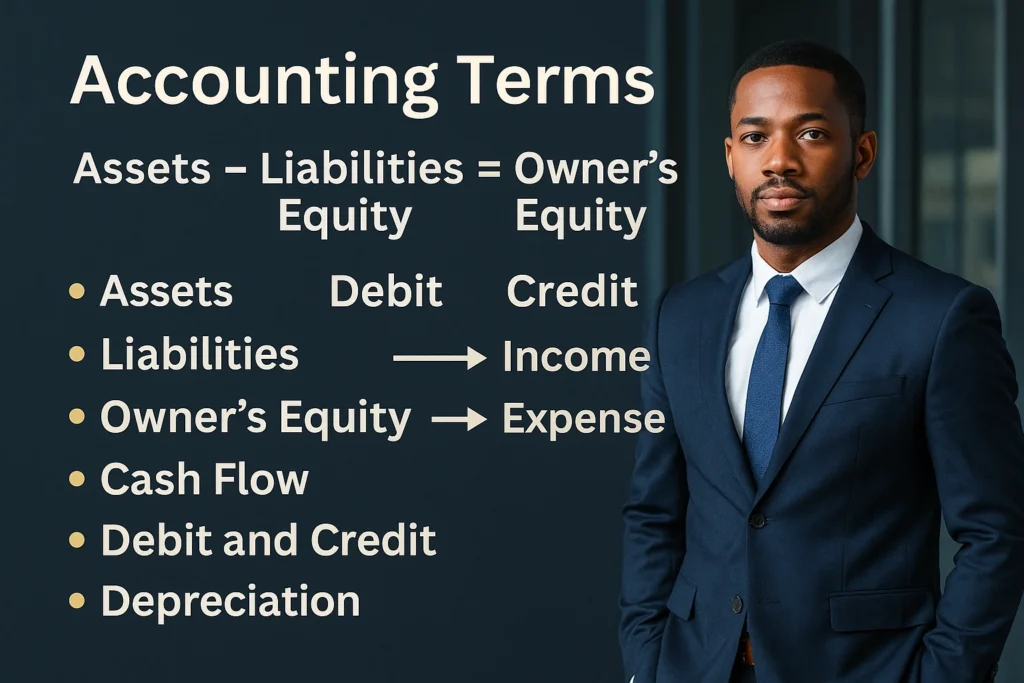Master Essential Accounting Terms for Business Success

Accounting Terms: Master the Basics for Business Success
Understanding accounting terms is essential for running a financially sound business. Whether you manage a small business, invest in real estate, or simply want better control over your finances, mastering these concepts helps you make smarter decisions and stay compliant with financial regulations.
Table of Contents
- Basic Accounting Equation
- Debits and Credits Explained
- Key Financial Statements
- Cash Flow vs. Income
- Depreciation in Real Estate
- Accounts Receivable vs. Accounts Payable
- Why Understanding Accounting Terms Matters
Basic Accounting Equation
The foundation of accounting is the equation:
Assets – Liabilities = Owner’s Equity
This formula helps assess a company’s net worth:
- Assets: Cash, property, inventory
- Liabilities: Loans, credit, debts
- Owner’s Equity: The residual interest after liabilities
For example, if a business has $500,000 in assets and $300,000 in liabilities, the owner’s equity is $200,000.
Debits and Credits Explained
Accounting uses a double-entry system where every transaction has both a debit and a credit entry:
| Account Type | Debit | Credit |
|---|---|---|
| Assets | Increase | Decrease |
| Liabilities | Decrease | Increase |
| Owner’s Equity | Decrease | Increase |
| Revenue | Decrease | Increase |
| Expenses | Increase | Decrease |
For instance, paying rent of $1,000 would be recorded as:
- Debit Rent Expense: $1,000
- Credit Cash: $1,000
Key Financial Statements
Income Statement (Profit & Loss Statement)
Shows the company’s revenues, costs, and expenses over a period, leading to net profit or loss. It’s also called the Profit & Loss Statement or Statement of Earnings.
Balance Sheet
Presents a snapshot of assets, liabilities, and owner’s equity at a specific time. This helps calculate net worth using the basic accounting equation.
Cash Flow Statement
Tracks actual cash inflows and outflows, categorized as:
- Operating Activities
- Investing Activities
- Financing Activities
Discover how these statements work together in our detailed guide on understanding financial statements.
Cash Flow vs. Income: The Difference
Net income reflects accounting profits, while cash flow indicates the actual cash movement.
A business can be profitable on paper but still experience cash flow problems if, for example, clients delay payments. Properly managing this is crucial to avoid insolvency even when the income statement looks positive.
Depreciation in Real Estate
Depreciation is an accounting method of allocating the cost of a tangible asset over its useful life. For real estate investors, depreciation can:
- Reduce taxable income without reducing cash in hand
- Improve cash flow by lowering tax obligations
For example, a residential rental property valued at $500,000 can be depreciated over 27.5 years, generating approximately $18,181 in annual depreciation deduction. This can significantly shield rental income from taxes while maintaining positive cash flow.
Learn more strategies in our real estate bookkeeping tips.
Accounts Receivable vs. Accounts Payable
Accounts Receivable: Money owed to your business by clients — often recorded as client invoices or outstanding invoices.
Accounts Payable: Money your business owes vendors — also called vendor bills or supplier invoices.
Properly tracking these ensures healthy cash flow management.
Why Understanding Accounting Terms Matters
Familiarity with accounting terms empowers business owners to:
- Make data-driven decisions
- Ensure compliance with tax laws
- Improve profitability and liquidity
- Better communicate with accountants and financial advisors
Maxim Liberty has been providing outsourced bookkeeping services to businesses and accounting firms in the USA and Canada since 2005.
